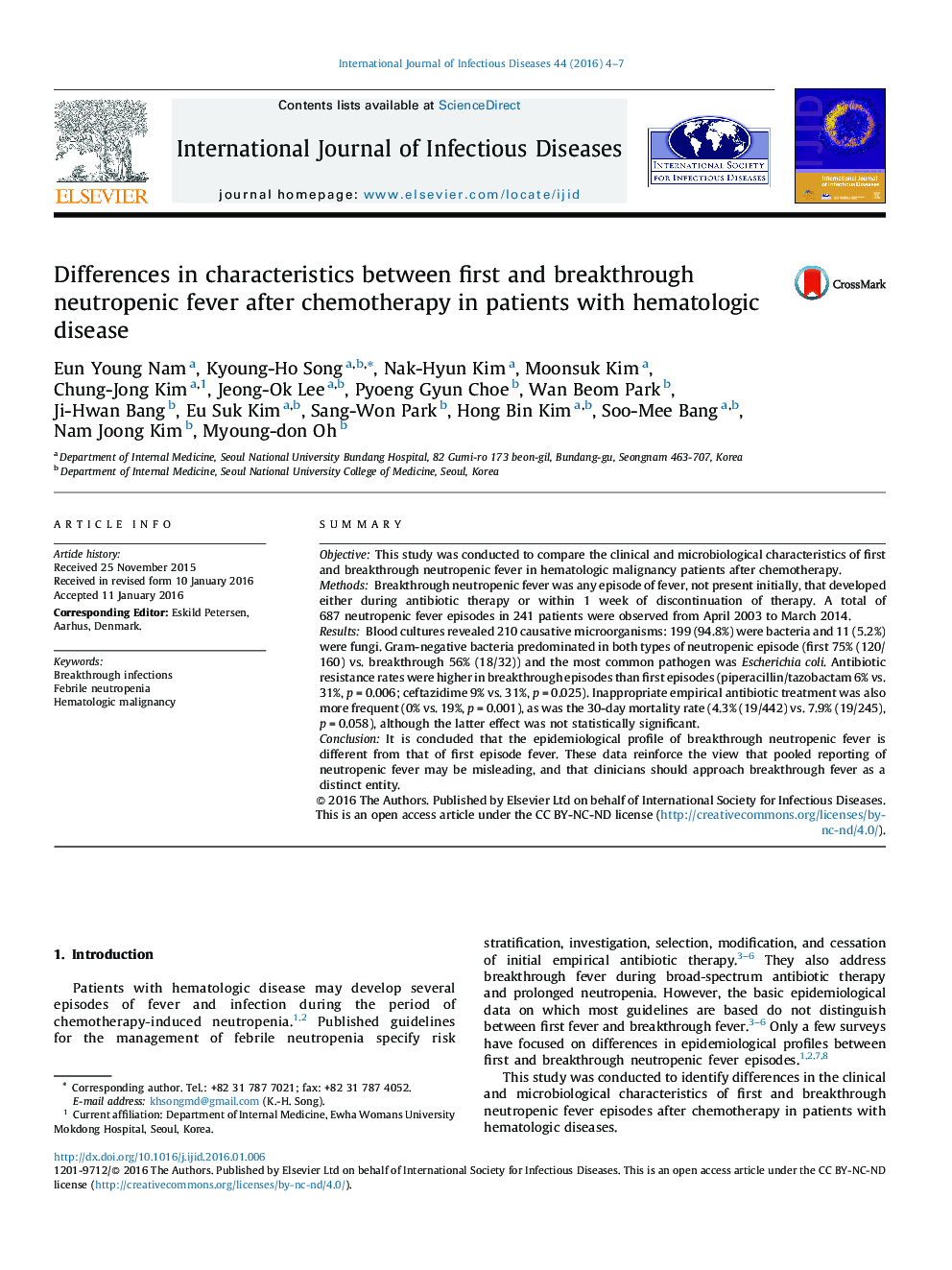| Article ID | Journal | Published Year | Pages | File Type |
|---|---|---|---|---|
| 3361671 | International Journal of Infectious Diseases | 2016 | 4 Pages |
•The clinical data of first and breakthrough neutropenic fever were compared.•Antibiotic resistance rates were higher in breakthrough episodes than first episodes.•Inappropriate empirical antibiotic therapy was more frequently observed in breakthrough episodes.•The epidemiological profile of breakthrough neutropenic fever is different from that of first episode fever.
SummaryObjectiveThis study was conducted to compare the clinical and microbiological characteristics of first and breakthrough neutropenic fever in hematologic malignancy patients after chemotherapy.MethodsBreakthrough neutropenic fever was any episode of fever, not present initially, that developed either during antibiotic therapy or within 1 week of discontinuation of therapy. A total of 687 neutropenic fever episodes in 241 patients were observed from April 2003 to March 2014.ResultsBlood cultures revealed 210 causative microorganisms: 199 (94.8%) were bacteria and 11 (5.2%) were fungi. Gram-negative bacteria predominated in both types of neutropenic episode (first 75% (120/160) vs. breakthrough 56% (18/32)) and the most common pathogen was Escherichia coli. Antibiotic resistance rates were higher in breakthrough episodes than first episodes (piperacillin/tazobactam 6% vs. 31%, p = 0.006; ceftazidime 9% vs. 31%, p = 0.025). Inappropriate empirical antibiotic treatment was also more frequent (0% vs. 19%, p = 0.001), as was the 30-day mortality rate (4.3% (19/442) vs. 7.9% (19/245), p = 0.058), although the latter effect was not statistically significant.ConclusionIt is concluded that the epidemiological profile of breakthrough neutropenic fever is different from that of first episode fever. These data reinforce the view that pooled reporting of neutropenic fever may be misleading, and that clinicians should approach breakthrough fever as a distinct entity.
